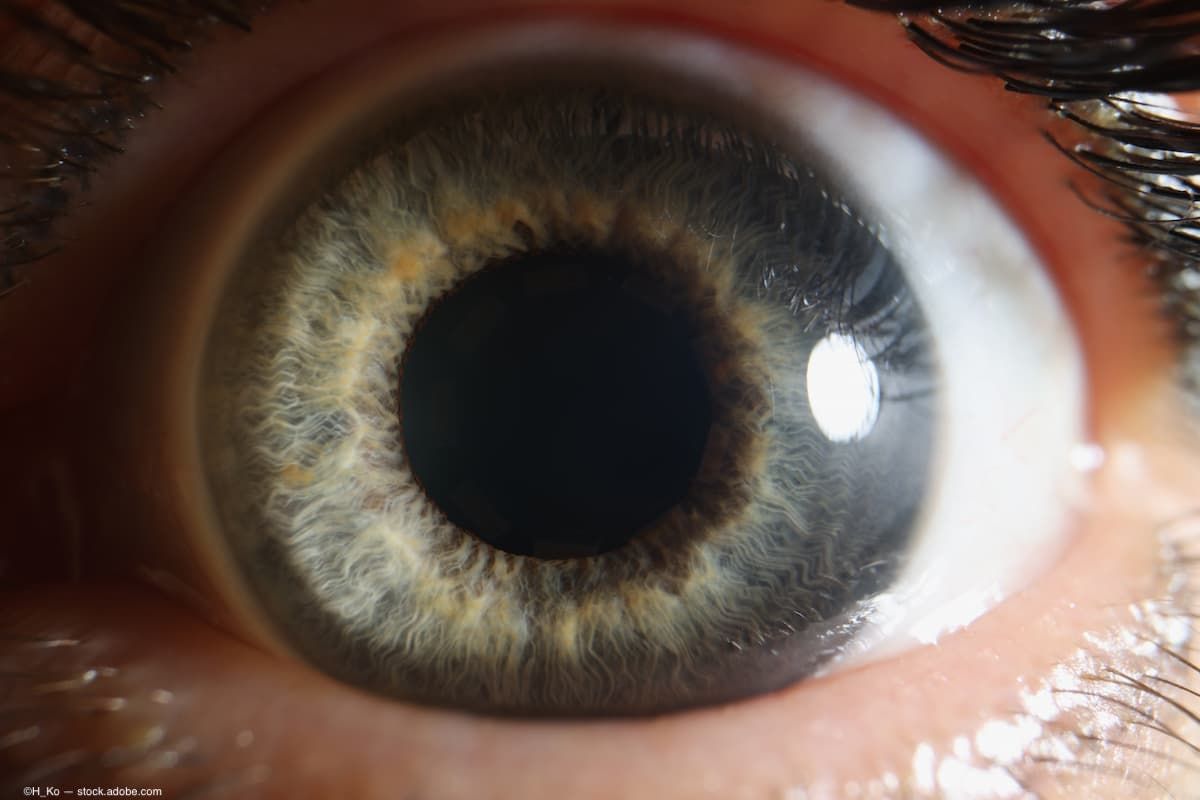News
Article
Eyenovia provides clinical, scientific update on FDA-approved products Mydcombi and clobetasol propionate ophthalmic suspension
Author(s):
The company announced results from a Phase IV study of tropicamide and phenylephrine hydrochloride ophthalmic spray 1%/2.5% (Mydcombi) designed to characterize the efficacy and duration of the lowest deliverable dose.
(Image Credit: AdobeStock/H_Ko)

Eyenovia announced results from a Phase IV study (NCT06217796) of tropicamide and phenylephrine hydrochloride ophthalmic spray 1%/2.5% (Mydcombi) designed to characterize the lowest deliverable dose for mydriasis.
According to a news release from the company, tropicamide and phenylephrine hydrochloride ophthalmic spray is the only FDA-approved fixed-dose combination of tropicamide and phenylephrine hydrochloride ophthalmic spray, and the first FDA-approved product in the Optejet.
Moreover, the company noted in its news release that current mydriatic eye drops used during eye exams have several limitations, including potential cross-contamination, difficulty instilling in patients with limited mobility, and tolerability and safety issues in some patients.1
The company also noted that phenylephrine, in higher amounts, has been known to cause serious potential systemic cardiovascular side effects in older patients, particularly those with high blood pressure.
After the FDA approved tropicamide and phenylephrine hydrochloride ophthalmic spray last year, the company noted it is designed to improve the efficiency of the estimated 106 million office-based comprehensive eye exams performed every year in the United States, as well as the estimated 4 million pharmacologic mydriasis applications for cataract surgery. The product is contraindicated and should not be used in patients with known hypersensitivity to any component of the formulation.2
Developed as a micro-formulation for use without anesthetic, the company said the ophthalmic spray will help improve the efficacy, tolerability, and efficiency of pharmacologic mydriasis.2
This Phase IV study was designed to determine the efficacy and duration of effect of the lowest deliverable dose of tropicamide and phenylephrine hydrochloride ophthalmic spray for pupil dilation. Twenty-nine subjects were treated with a half dose of the spray (8µL per eye) and evaluated at the end of 2023 at the State University of New York School of Optometry by Denise Pensyl, OD.1
The company also detailed some study highlights:
- At 30 minutes post-dose, clinically relevant pupil dilation was achieved in approximately 67% of patients;
- By 60 minutes, that percentage increased to 86%;
- The majority of patients returned to a pupil size of less than 5mm between 3.5 and 6 hours post-instillation, with 93% reaching that point by 6 hours;
- Administering a lower 8 microliter volume was well tolerated with minimal adverse events reported.
Michael Rowe, Eyenovia’s CEO, said in a news release that the results of the study highlight the favorable efficacy and tolerability of the spray dispensed through the Optejet.
“Notably, dilation was already dissipating by 3.5 hours post-instillation, which is similar to published studies of dilating eye drops followed by the use of a mydriasis reversal agent,” Rowe said in the news release. “These results suggest that for patients in which the lowest deliverable dose of tropicamide and phenylephrine may be desired, the precision and flexibility of the Optejet technology may be an option for eye care professionals and their patients.”
Eyenovia plans to present the full data set at an upcoming medical meeting this year.
The company also announced plans to deliver a presentation at the Association for Research in Vision and Ophthalmology (ARVO) 2024 Annual Meeting, being held May 5-9, 2024, in Seattle, Washington.
According to the news release, the presentation will offer results from a study demonstrating that Formosa Pharmaceuticals’ Active Pharmaceutical ingredient Nanoparticle Technology (APNT) can improve the solubility and bioavailability of topical ophthalmic medications.1
The company noted it has licensed clobetasol propionate ophthalmic suspension 0.05%, which leverages APNT technology, from Formosa in August 2023, and clobetasol was subsequently approved by the U.S. Food and Drug Administration (FDA) for the treatment of post-operative inflammation and pain in March 2024. Eyenovia is planning to launch clobetasol later this summer, as a complement to the ophthalmic spray, the company’s commercially available mydriasis agent.
“The data presented at this year’s ARVO Annual Meeting further demonstrates that APNT represents an exciting new drug manufacturing technology with the potential to deliver suspensions through our Optejet dispenser,” Rowe added in the news release. “We look forward to incorporating this technology in future products, as well as launching clobetasol which uses APNT. Clobetasol will be the first new ophthalmic steroid in many years, participating in a market estimated to be worth in excess of $1.3 billion annually.”
References:
Inc E. Eyenovia Provides Clinical and Scientific Update on FDA-Approved Products MydcombiTM and Clobetasol Propionate Ophthalmic Suspension. GlobeNewswire News Room. Published April 25, 2024. Accessed April 25, 2024. https://www.globenewswire.com/news-release/2024/04/25/2869465/0/en/Eyenovia-Provides-Clinical-and-Scientific-Update-on-FDA-Approved-Products-Mydcombi-and-Clobetasol-Propionate-Ophthalmic-Suspension.html
Eyenovia announces FDA approval of MydCombi, first ophthalmic spray for mydriasis. Ophthalmology Times. Published May 8, 2023. Accessed April 25, 2024. https://www.ophthalmologytimes.com/view/eyenovia-announces-fda-approval-of-mydcombi-first-ophthalmic-spray-for-mydriasis
Newsletter
Don’t miss out—get Ophthalmology Times updates on the latest clinical advancements and expert interviews, straight to your inbox.




